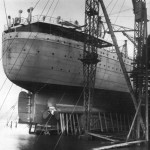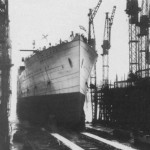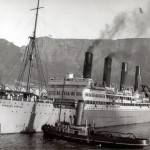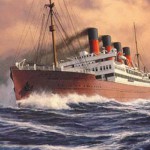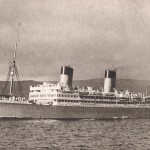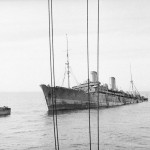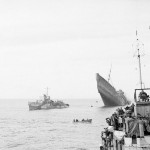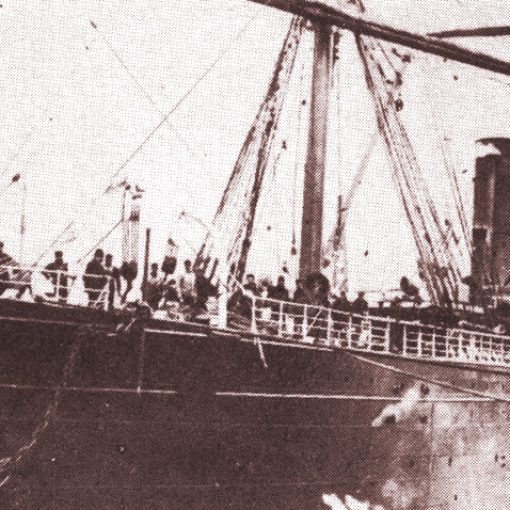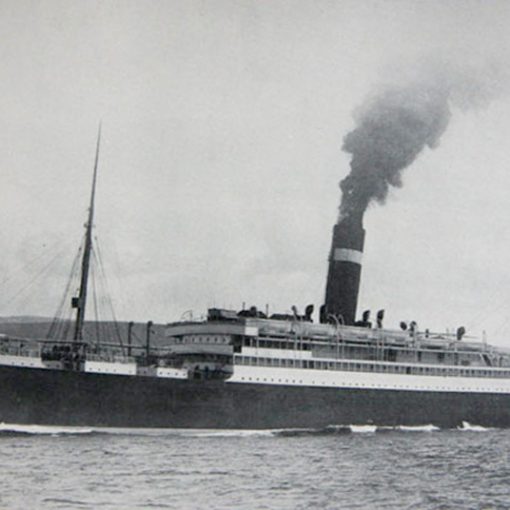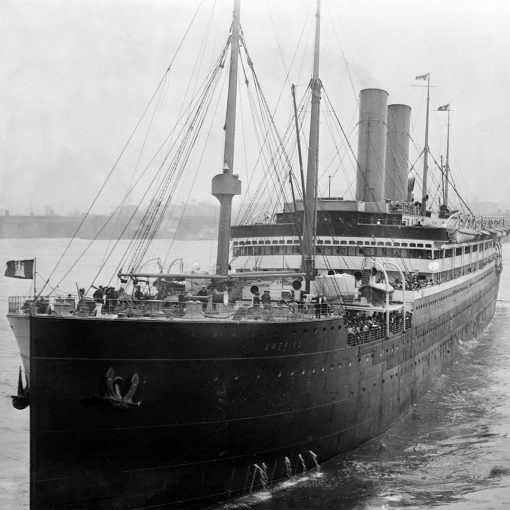1922 – 1943
In the beginning of the 20th century, a great battle stood on the North Atlantic. It was not a battle in the usual context, but a fierce competition among a number of shipping companies. Cunard, White Star, HAPAG and Norddeutscher Lloyd were a few of the top ship operators, and such wonderful ships as the Olympic, Aquitania and Imperator surely gave this important sea lane a touch of glamour and majesty.
However, the North Atlantic was by far not the only ship route in the world, albeit the most prestigious one. The British Empire depended on its maritime might to maintain the link with its colonies across the globe. One of these links was undoubtedly the Union-Castle Mail Steamship Company Ltd., more commonly known simply as the Union-Castle Line. With a government mail contract, this company was pre-eminent on the run between Great Britain and South Africa, carrying passengers as well as mail.
But, the ships that attracted the most publicity were those on the North Atlantic. So, when the Union-Castle Line was planning to order new express liners, they decided to adopt a special characteristic that had made a few of the North Atlantic queens so well-known – four funnels. In February 1913, they commissioned two sister ships from the yards of Harland & Wolff in Belfast. The original intent was to have at least one of the two ships completed by 1915. But, history would have it a different way.
In 1914, the First World War erupted and Europe was plunged into a bloody conflict. At first, it was believed that the war would be over in a matter of months. The first of Union-Castle’s new ships was laid down at Harland & Wolff in 1915. When it soon became apparent that the war was going to last longer than first anticipated, construction on the ship was brought to a halt. The second sister had not even been laid down yet.
Four years later, in 1918, World War I finally came to an end. The carnage had claimed millions of lives, and a great number of ships had been sunk. The peace treaty of Versailles meant that the surviving German ships were handed over to the victorious nations as war reparations. But in order to replenish the merchant fleets completely, newbuilds were necessary.
By now, work could at last continue on the still unfinished ship sitting in the yards of Harland & Wolff. She would eventually be launched in 1919, named Arundel Castle. But there was still a contract for a running mate. Clogged with war replacement tonnage orders, Harland & Wolff would not be able to start building the new ship yet. So, the order was subcontracted to the Clydeside yard of John Brown & Co. as Harland & Wolff number 456c.
In 1919, the keel of the ship could finally be laid. The ship’s design had been conceived back in 1913, but the company still decided not to change anything. On March 9th 1921, the day of launch had arrived. The name decided upon was Windsor Castle and appropriately, the Prince of Wales was present to do the christening. Actually, the name itself had brought a problem for the company, as a River Severn excursion steamer already bore it. To solve this, that vessel was simply acquired, renamed and the sold again. That done, there were no more obstructions in the way.
The fitting of engines and interiors took another year, and in March of 1922 the Windsor Castle was completed. With a design nearly a decade old, she was the last of fourteen large liners built to sport four funnels. When Windsor Castle set out on her maiden voyage from Southampton to Cape Town in April 1922, she did so as one of the prime ships on that route. Borrowing quite a lot of features from the North Atlantic queens, her interior appointments were very luxurious. The ship offered recreation in either the gymnasium or the swimming bath. Windsor Castle had also been equipped with an electric lift, thus offering the passengers a comfortable way of getting from one deck to another.
And apart from the comforts, the ship had also been designed with safety in mind. The hull was subdivided into twelve watertight compartments, and a double bottom ran the full length of the hull. Furthermore, Windsor Castle was equipped with many lifeboats, with room for the ship’s total capacity of passengers. Just aft of the fourth funnel, the ship had a pair of gantry davits, alone capable of handling twelve boats.
On May 9th 1922, Windsor Castle arrived in Table Bay for her maiden call at Cape Town. The voyage had passed without any mishaps, and the ship could now settle into a routine service between Great Britain and South Africa. At about 19,000 gross tons and with a service speed of 17 knots, she and her sister Arundel Castle were now the largest and fastest ships serving in the Union-Castle fleet.
The two ships remained the prime pair on the South African run for a few years. In 1926, they were eclipsed by the company’s new motorship Carnarvon Castle. During the following ten years, other ships entered service that made the older ships look old-fashioned, almost outdated. So, in the mid-1930s, the Union-Castle Line decided to update their fleet. The Windsor Castle, like her sister, was brought to Harland & Wolff in 1936 for an extensive refit. Outwardly, the ship’s appearance was changed completely. The forepart was modernised and rebuilt with a more raked bow, adding an extra 25 feet to the ship’s length. But the most striking change was that the four funnels were removed and replaced by two, thicker ones.
Internally, the ship’s machinery was refitted. With a new set of turbines, new boilers and converted to burn oil, the Windsor Castle emerged as a considerably faster ship, with a new service speed of about 20 knots. To further improve the ship’s appearance, the pair of gantry davits was removed as well. When Windsor Castle returned to her regular service in January 1938, she was indeed a very beautiful vessel. But another global conflict was to interfere with the fate of the Windsor Castle. When the Second World War erupted in September 1939, she was requisitioned for use as a troop transport. For this purpose, she was painted entirely grey, and many of the windows in her superstructure were covered.
On November 4th 1940, Windsor Castle was attacked by German aircraft while travelling in the waters west of Ireland. During the attack, a 500-pound bomb dropped from one of the German planes landed in the first class smoking room. Fortunately, the device failed to explode. Had it done so, the devastation would most certainly been horrific. Surviving this extremely close shave, the Windsor Castle could continue on her way. The bomb was removed when the ship docked at Greenock the following day.
Having survived such an incident, it was perhaps thought that Windsor Castle was a ship with great fortune. Sadly, this was not the case. Three years later, on March 23rd 1943, Windsor Castle was sailing in a convoy that had left Greenock a few days earlier and was now in the Mediterranean Sea, about 110 miles Northwest of Algiers. Early that morning, the convoy was attacked by German bombers. A torpedo launched from one of the aircrafts hit the Windsor Castle, which began to sink by the stern. With 290 crew and 2,699 troops on board, the death toll might have been devastating. Fortunately, the Windsor Castle managed to stay afloat for thirteen hours after the attack, thus making it possible for other vessels to come to the rescue. In the end, all people on board were rescued, except for one crewman who had been killed. With the rescue ships still gathered around her, the Windsor Castle finally sank, stern first. Her captain gave her final position as 37° 27′ N – 00° 54′ E. There she remains to this day.
Specifications
- Originally 661 feet (201.9 m) long, 686 feet (209.6 m) after 1937 refit
- 72.5 feet (22.2 m) wide
- Originally 18,967 gross tons, 19,141 after 1937 refit
- Steam turbines turning two propellers
- 17 knot service speed, increased to 20 knots after 1937 refit
- Passenger capacity of 870 people, reduced to 604 after 1937 refit

